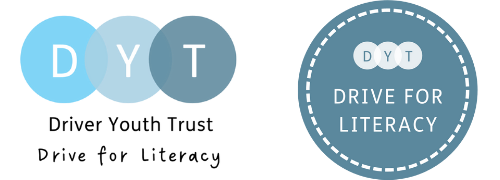Effective specialist support and ringfenced funding is needed to support those who struggle to learn to read
27/9/2018
After analysis of the Phonics Check by Driver Youth Trust revealed a ‘post-code’ lottery for SEN learners, Richard Selfridge takes a closer look at the figures, and what they tell us about the support children in the UK receive.
Those children who do not learn to decode at the required level by Year 2 should have effective specialist teacher support and ringfenced funding to support them in school. Newly released results from the 2018 Year 1 Phonics Screening Check, now in its seventh year, show that schools are helping over 80% of children to learn to decode texts. But those who struggle to decode by the end of Year 2 are overwhelmingly children with identified Special Educational Needs and Disability, and they and their schools need further support to ensure that they can access the full primary curriculum.
Children are assessed using a Phonics Screening Check in June of Year 1. This checks children’s ability to decode a list of 40 relatively simple words which indicate whether a child has begun to be able to read texts for themselves. The check was introduced in 2012 to encourage schools to focus on teaching children systematic synthetic phonics. Those who do not reach the expected standard in Year 1 are assessed a year later alongside the following year’s Year 2 cohort.
Improvements are seen across all categories of special needs and disabilities (known in schools as SEN) between Year 1 and Year 2. Children with identified SEND who do not reach the expected standard in Year 1 make dramatic progress by the time they retake the check in Year 2, with an additional 50% of SEN children decoding at the expected standard by the time they enter Year 3.
By the time the Phonics Screening Check is undertaken in Year 1, four out every five of children in Year 1 now achieve the required standard, an increase from just under three in five in 2012 when the check was introduced. Driver Youth Trust, the UK’s leading charity working committed to improving outcomes for young people who struggle with literacy, is pleased to report that SEN does not automatically lead to issues with decoding and almost 7% of those achieving the expected standard in 2017 had identified SEND by the time they were assessed in Year 1.
This, however, represents just under one in two (44%) of those children with identified SEN in 2017, compared to almost nine out of ten (89%) of those children for whom schools had not identified any SEN who achieved the required standard. Whilst the number of children achieving the expected standard has risen, the gap between those who have struggled to learn how to sound out words phonetically and their peers remains stubbornly large.
As the graph above shows, those most at risk of not learning to decode at the expected standard in Year 1 are overwhelming those with identified SEN. Of the 2018 Year 2 cohort, 97% of those children for whom schools have not identified any SEN achieved the required standard, as the graph below shows.
This graphs also shows that schools appear to be successful in both identifying SEND and supporting those who do not achieve the required standard in year 1 to do so by the time the cohort is reassessed in Year 2. By Year 2 just over six in every ten (64%) children with identified SEND has achieved the required standard in the PSC, a rise in 21 percentage points when compared to Year 1.
The gap between those who can decode to the expected standard by the end of Year 2 and those who struggle to access written language remains, however. The Driver Youth Trust calls for SEN learners to be given the same level of priority that is afforded to those who are socio-economically disadvantaged and for an increase in the availability and effectiveness of specialist services for those with SEND.
More worryingly, the data released by the Department of Education shows that children with Special Education Needs and Disabilities (SEND) have dramatically different success rates across the country when learning to read. A child with an EHCP in Inner London is twice as likely to reach the expected standard in the Phonics Screening Check compared to a child in the North West, East or West Midlands.
The picture is more stark when comparing Local Authorities, with just 6% of children with an EHCP in Coventry, Stockton-on-Tees and Sunderland reaching the expected decoding standard compared to 47% of children in Hammersmith and Fulham.
The Driver Youth Trust’s Jules Daulby commented, “These shocking results show that effective specialist support is needed to reduce the gaps between children who struggle to read and their peers. Some children with special educational needs and disabilities are at a big disadvantage simply because of where they live. This national disparity in phonics scores demonstrates clearly that areas which lag behind should have effective specialist teacher support and ringfenced funding to catch up with the best.”






